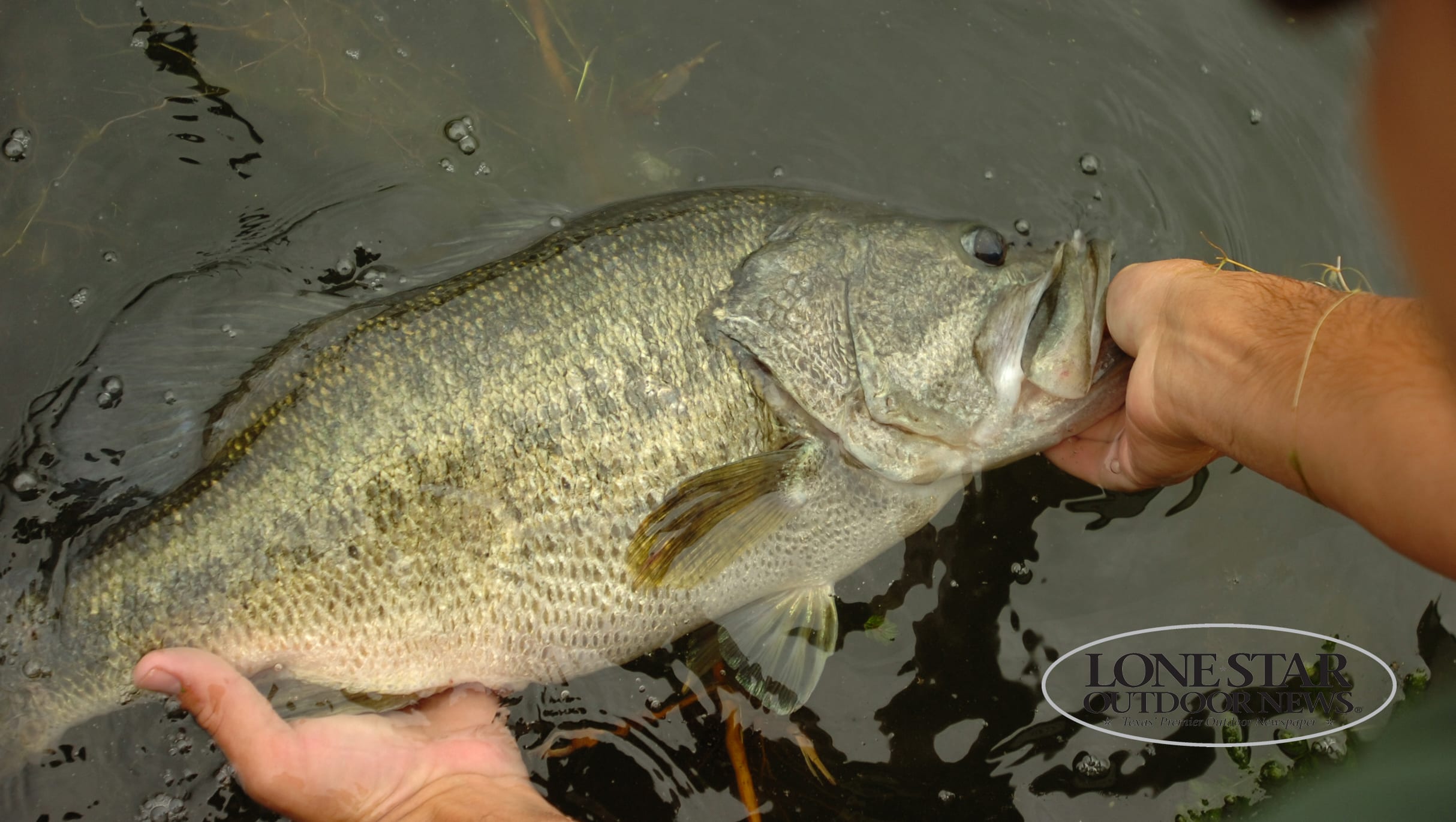Written by Conor Harrison, Lone Star Outdoor News
Add more structure and food.
Those two things, along with genetics and age, could help you grow the biggest largemouth bass you’ve ever caught in a pond you manage.
That was one of the main takeaways when pond and lake managers from across the country came to Dallas last month for the Pond Boss IV conference to discuss all things bass management.
The most-anticipated presentation of the weekend was a review of a study conducted by South Dakota State University biologist Dr. Brian Graeb and a team of research scientist on Grand Lake, 120-acre private lake in East Texas owned by Lee Roy Mitchell.
“We really wanted to know how we could grow 15-pound bass,” Graeb said. “We came up with a strategy for trophy fish management based on age, habitat, nutrition and genetics. These are all barriers that must be overcome to grow big fish.”
In 2011, the team began studying the pond and found prey fish to be abundant — bluegills, coppernose bluegills, crappie, redbreats sunfish, tilapia, gizzard and threadfin shad and crawfish. The habitat was comprised of old cedar trees and brush piles.
“Starting out, the genetics were easy,” Graeb said. “We collected 80 bass between 2.5 and 24 inches, did a fin clip and removed the odolith. We found the lake had 31 percent pure Florida strain, 14 percent F1 hybrids (first-generation hybrids) and 55 percent Fx hybrids (everything else) and zero percent northern strain. It was a heavy Florida strain, so genetics were good.”
After examining what the bass were eating (55 percent crawfish, 50-50 percent small fish) and noticing the bass started out gaining weight quickly before leveling off in weight as they got older, the research team realized some of the fish were very fat and some were very skinny.
“We had lots of variability within the bass population,” Graeb said. “We began studying why. We started to look at habitat use and movement by putting radio telemetry into 40 bass and did an 18-month study on home ranges and movement.”
What the researchers found was some areas of the lake received heavy use, while other areas received very little. Also, the group found a wide variety in how far bass swam.
“The smallest mover had a home range of about 50 yards, and this is what we would normally expect,” Graeb said. “But we began to see bass that used the entire lake, routinely zipping over a mile to each end of the lake. In 24 hours, one bass swam 1.4 miles and we had one go more than two miles.
“These were very unexpected results.”
After scanning the bottom of the lake, it was found the old structure had rotted away and bass were traveling so far to find food sources on what little structure remained.
“We determined habitat was the most limiting factor in this lake,” Graeb said. “It was like we had a bunch of marathon runners and we wanted couch potatoes. The bass were skinny by having to swim so far.”
The team went about making ambush points from structure built by Mossback Fish Habitat. Horizontal “trees,” trophy trees and high-density safe haven trees were all added to form “fish cities” throughout the lake.
“The goal is to try and decrease fish activity, decrease their home range and increase consumption,” Graeb said. “Our target is between 20- and 40-percent coverage of the lake. Currently, we have 22 fish cities and 13-percent habitat coverage with a plan to increase annually. We want to see if too much habitat begins to be too much of a good thing.”
Has it paid off with bigger bass yet?
Check back in a year or two.


